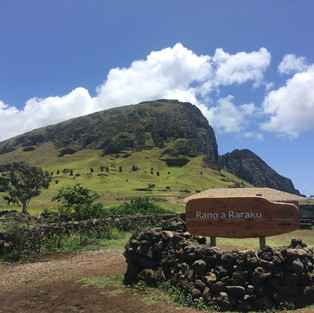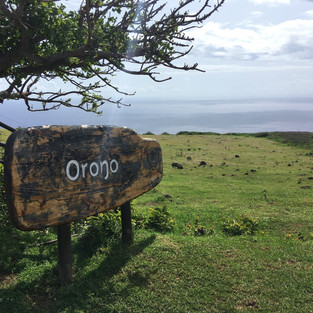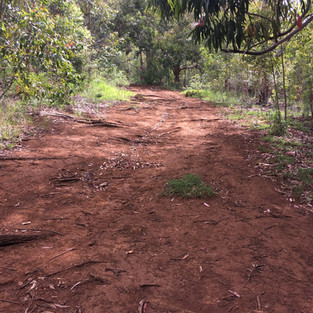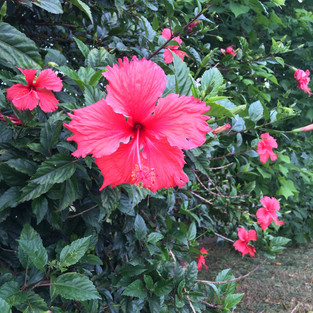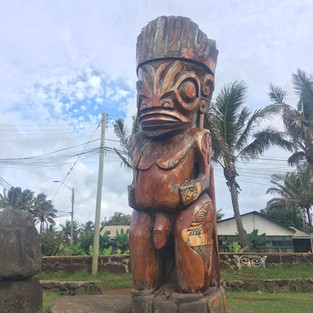As part of the Global Leaders Program, Kendall Grady and I went to Easter Island to help the ONG Toki - Escuéla de musica. We discovered a world of wonder and this is the introduction of our week long journey.

Kendall and I spent much time talking to the people living on the island, from all ages and all horizons, working in different settings and branches - tourism, education, art, construction. We wanted to taste, feel, see, hear and smell as much as possible during our time there. We wanted to understand the island as much as the people who made it across the oceans and decided to build their lives on the most secluded part of the earth. We wanted to be able to be them for a moment to understand their problems and find - with them - possible solutions.
Like any project or idea one could have on the Island, it all started as a dream. A dream about ancestry and legacy. It was the dream of a couple, Mahani Teave and Enrique Icka and if you ask them how their dream came true, their answers are as poetical as the dream itself. It was fate, it was luck, it was written in the stars and already present in the Mana - the Rapa Nui concept of energy generated by the Earth and present in everything. We tried to get to the core of that dream, understand and feel what it truly was from the beginning to help them sharing it more clearly to the team of people they have the chance to work with. This case study is the story of that dream, and how to reconnect with it so it does not disappear back in the collective Mana.
Back in 2012, Mahani and Enrique were concerned about the big question of Time: where do we come from or how do we commemorate and protect our ancestry - Where is humanity going or how do we protect our culture and environment in order to be proud of our legacy on Earth? Their overall question put them in a position in 2012 where they were thinking about the present - how do we find an immediate solution to reconciliate past and future? They met Michael Reynolds - architect specialist in self sustainable buildings, based on the concept that any garbage can become primary materials for construction and started to develop and raise the ‘Earthsip’ that is now Toki off the ground. Enrique donated a piece of his land to the project and Toki was born. Toki’s building for the music school and Toki’s ancestral garden.
The project has always been considered as a unique project: Toki is the Rapa Nui words for ‘tool’. The tool they use to carve Moais, but it is also the word for the stone the Moais are carved in. Toki - like a lot of words in Rapa Nui - means the small and the bigger picture all at once. It englobes a concept: the material is the tool, the tool is the material - or everything IS its micro and macro structure. In this context, the music school was the tool and the material, the garden was the tool and the material, the building was the tool and the material… The three entities that are now struggling to find meanings among themselves are part of one concept - the Toki.
It took them a few years, a lot of volunteers from all over the world, time of financial struggle to raise the money and get more materials, commitment, dedication, passion and love. The financial plan of Toki was always left to chance. To be completely blunt, there were no long term financial plan, just a tremendous faith in humanity and the Mana. The truth is that they survived for 7 years on short term grants and private donations. Mahani confessed that it was a miracle the school is still going after all those years of unplanned but organic growth. As for today, Toki is facing bankrupcy. The project has no funds for the next coming academic year and cannot pay its teachers. The institution has a growing debts to pay and the finances are in need of assessment/redressement.
What is Toki’s mission? Quoting their website: ‘We have been giving free classes to children and adolescents since 2012 and we currently have more than 100 students. We built the first totally self-sustainable School of Music in Latin America and Oceania and we are working arduously to promote environmental education and change. We are taking action to revive the Rapanui language which is “in danger of extinction”. Currently only 1,340 Rapanui- 19% of the total ethnic group- speak the language.’
Where is Toki? Toki is on Easter Island also referred as Rapa Nui by the indigenous population.
Rapa Nui is not just any island… It’s geography is extreme: a volcano rocks that appeared from the abysses of the Pacific Ocean 3 millions years ago at the boundaries of the Pacific and the Nazca plates.The closest land is a tiny island called Pitcairn 2090km (70 inhabitants) in the western direction, and the mainland (Conception in Chile) is situated 3600km to the East. Isolated is an understatement. The island is a mix of desolation due to deforestation in the 19th century which subsequently implied that the Rapa Nui could no longer build boats and go offshore and a luxurious fauna and flora due to the rich soil the 128 volcanos on the island have created over the last millions years. It’s an island of contradiction. It has everything but yet the people living there seem to think they need the outside world to survive. They import their food and goods when they have enough chicken, cows, fruits and vegetables to feed the population of the island. You literally just need to bend down or reach the branch of a tree to find food. The islanders seem to have lost their roots and ability to survive on their own, after years of imposed colonisations.
There are 4 schools on the Island - 3 public, 1 private, but none of them provide music tuition. The education is crucial on the island - in a population of about 7750, more than 3000 are under 18. as a side effect of its rich culture, the island welcome about 10000 tourists every year.
Because of tourism, the clash of cultures is omnipresent: polynesian life style, ancestral music and dances, wood carving, timeless days, and flashy tourist attractions like dance shows, discotecas, diving trips, quad rentals (they even submerged a fake moais to attract foreign divers). The island seems to live two speeds at a time - the tourist short life span, short term solutions, fast consumption overlooked by their timeless ancestry.
The island is isolated also for it has barely any phone or internet signal. In a world that feeds on immaterial connections, the island is facing a time where it’s intrinsic culture is being challenged by arriving new technologies. The island use to work on a community setting, with defined tribes and families. They use to work together for the better good. What technology is doing, as it has already done in most part of the world, is antagonising the people living together, and shutting off their ancestral ability to connect and communicate directly. As human beings ought to be able to.
We had the chance to be hosted by a couple who synthesised the complexity of the Island. Marialoreto Mallargas is a Spanish teacher in the collegio of the Island, she is Chilean and moved on Easter Island to follow her heart and raise her family with her Rapa Nui husband Jorge. Jorge Hotus is from a very important Rapa Nui family on the Island: they are in charge of the legacy of the language. His father started to write books about the Rapa Nui language and grammar in the 1980s, and Jorge and his sister are now trying to develop the project even more. Their son Miru (13yo) is a student in Toki where he learns the piano. We spent much time with Miru and some of his cousins, and it was remarquable to see how their generation reacts to their culture. The teenagers on the island dream of having a continental life on an island that does not have the infrastructure for it.


























